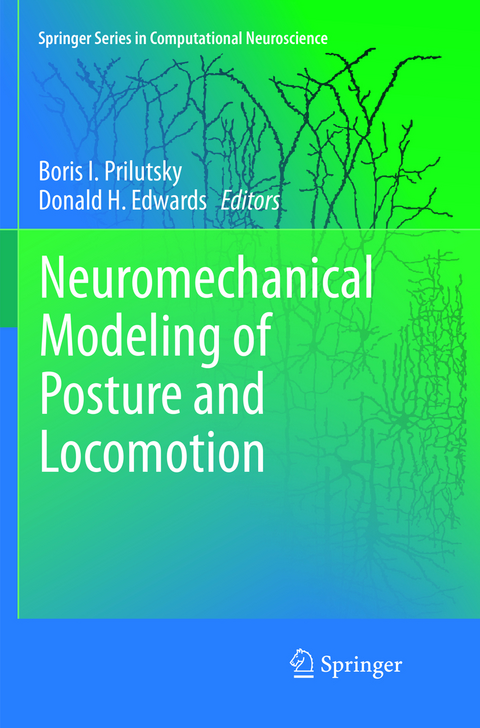
Neuromechanical Modeling of Posture and Locomotion
Springer-Verlag New York Inc.
978-1-4939-8008-6 (ISBN)
Boris Prilutsky received his BS degrees in physical education and applied mathematics/ mechanics from Central Institute of Physical Culture in Moscow, Russia and Moscow Institute of Electronic Engineering, respectively, and a PhD in animal movement biomechanics and physiology from Latvian Research Institute of Traumatology and Orthopedics. He is currently an associate professor in the School of Applied Physiology and director of Biomechanics and Motor Control laboratory at the Georgia Institute of Technology and an adjunct associate professor in the Division of Physical Therapy at Emory University School of Medicine. His research interests are biomechanics and neural control of normal and pathological movement. Donald H. Edwards received a B.S. degree in electrical engineering from the Massachusetts Institute of Technology and a Ph.D. in neurobiology from Yale University. He studied sensori-motor integration as a postdoctoral research associate with Donald Kennedyat Stanford University and with Brian Mulloney at University of California, Davis. He joined the faculty at Georgia State University as Assistant Professor of Biology and is currently Regents’ Professor of Neuroscience. His research interests include sensori-motor integration, neuromechanics and the neural control of behavior.
Preface.- Better science through predictive modeling: Numerical tools for understanding neuromechanical interactions.- A neuromechanical model of spinal control of locomotion.- Neural regulation of limb mechanics: Insights from the organization of proprioceptive circuits.- Model-based approaches to understanding musculoskeletal filtering of neural signals.- Modeling the organization of spinal cord neural circuits controlling two-joint muscles.- Muscles: non-linear transformers of motor neuron activity.- Why is neuromechanical modeling of balance and locomotion so hard?.- Neuromusculoskeletal modeling for the adaptive control of posture during locomotion.- Model-based interpretations of experimental data related to the control of balance during stance and gait in humans.- Computing motion dependent afferent activity during cat locomotion using a forward dynamics musculoskeletal model.- Modeling and optimality analysis of pectoral fin locomotion.- Control of cat walking and paw-shakeby a multifunctional central pattern generator.
“This is a desk reference, text, and atlas on the Biomechanics, Kinesiology, Bioengineering, and Neurophysiology of Posture Control and locomotion of animals, humans, cats, and sting rays. … This is a very high quality monograph on computational neurosciences. The book will benefit researchers, neurophysiologists, neurologists, and kinesiologists.” (Joseph Grenier, Amazon.com, April, 2018)
| Erscheinungsdatum | 20.12.2018 |
|---|---|
| Reihe/Serie | Springer Series in Computational Neuroscience |
| Zusatzinfo | 52 Illustrations, color; 64 Illustrations, black and white; XI, 368 p. 116 illus., 52 illus. in color. |
| Verlagsort | New York |
| Sprache | englisch |
| Maße | 155 x 235 mm |
| Themenwelt | Mathematik / Informatik ► Mathematik ► Angewandte Mathematik |
| Medizin / Pharmazie ► Studium | |
| Naturwissenschaften ► Biologie ► Humanbiologie | |
| Naturwissenschaften ► Biologie ► Zoologie | |
| Schlagworte | Locomotion • Modeling sensorimotor integration • Neuromechanical modeling • Posture • Sensory control of neural pattern generation |
| ISBN-10 | 1-4939-8008-4 / 1493980084 |
| ISBN-13 | 978-1-4939-8008-6 / 9781493980086 |
| Zustand | Neuware |
| Haben Sie eine Frage zum Produkt? |
aus dem Bereich


